If the color purple is your favorite, how about bringing an Oxalis Triangularis Indoors. To learn more, read this Purple Shamrock Care guide below!
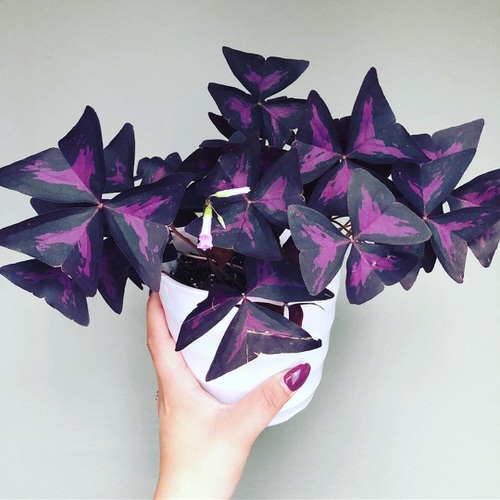
zoomplant
Oxalis Triangularis is one stunning beauty that you must include indoors for a bold and colorful statement. Here’s all you need to know about How to Grow Purple Shamrock in any home!
Common Names: Love plant, Purple shamrock, False shamrock, Wood sorrel, Black oxalis, Oxalis
botanical name: Oxalis triangularis syn. Oxalis regnellii
USDA Hardiness Zone: 8-11
Oxalis Triangularis Profile
Native to Brazil, the purple shamrock is a low-growing perennial from the oxalidaceae family. It has deep-hued foliage that looks nearly black. The plant carries white to pale pink or lavender-color blooms. It grows up to 0.5-1 feet tall and 1-2 feet wide.
Propagating Purple Shamrock
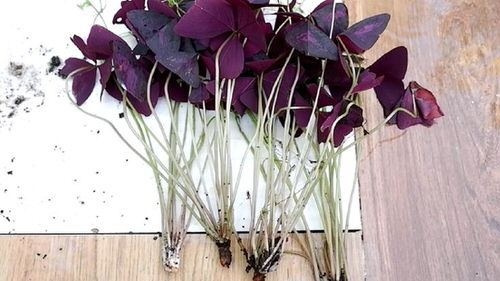
From Division
It is a cost-effective technique for getting more plants. Division also stops the mature plants from becoming overcrowded.
- Gently dig up the plant keeping the roots intact.
- If the plant is very large, carefully separate the root ball to divide it using sterile scissors in half or more pieces.
- Now plant new sections in a well-draining growing medium.
From Bulbs
Plant the bulbs in Spring, spacing them 3-4 inches apart if planting more than one. Water the soil, but do not make it soggy. Keep the pot in a warm and bright area. New growth will appear in 3-4 weeks.
Requirements for Growing Purple Shamrock in Any Home
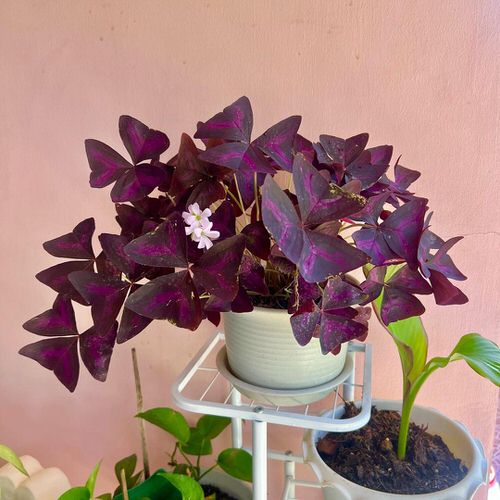
plant. and.bake
light
While growing indoors, make sure it gets at least 1 or 2 hours of mild direct sunlight on a daily basis. Place the pot by a window that gets bright indirect light on most parts of the day.
Rotate the plant frequently every week, so every part receives even light exposure. Remember, lack of light can cause stunted growth.
Soil
Use well-draining, loamy, or sandy potting mix made for houseplants. This plant’s roots are vulnerable to rot, so avoid using a compact growing medium. If you want to DIY your own soil, use one part of each garden soil, potting mix, and peat or coconut coir.
water
Shamrock plants can’t withstand drought and grow well in slightly moist soil plant so never let the soil dries out completely.
When growing indoors, be careful and never overwater constantly as evaporation in the home conditions will be low, and waterlogging can lead to root rot. It is better to water when the one inch of topsoil feels a bit dry to touch. During dormancy in winters, water lightly about every 2-3 weeks.
Note: Never let the soil dry out completely, as it will make the plant wilt.
Temperature and Humidity
Purple shamrock prefers a moderately warm and stable temperature range. The plant can endure nighttime temperature down to 50 F (10 C) easily. Keep it away from air-conditioners, heaters, and drafts as they can harm the leaves. Moderate humidity is perfect for this plant.
Purple Shamrock Care
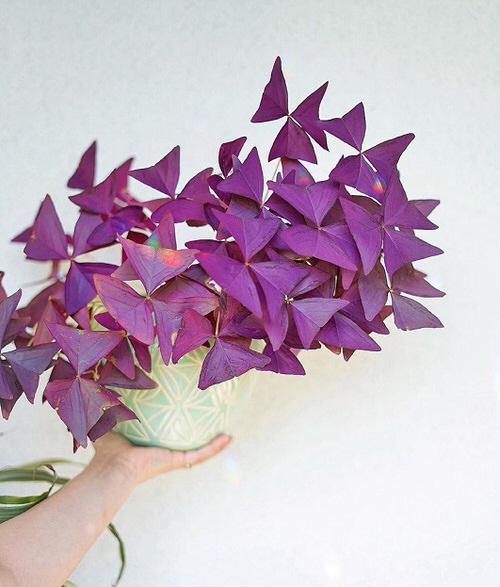
alysondawn
Fertilizer
Feed your purple shamrock using a balanced liquid fertilizer, diluted to 1/4 of its strength, once in 4-6 weeks. Read the label for instructions.
Pests and Diseases
This beautiful foliage plant is susceptible to mealybugs, spider mites, and aphids. Use insecticidal soap to combat this issue.
The most common disease that affects the plant is powdery mildew, causing white spots on the leaves. Keep the plant where it gets good airflow and avoid overwatering.
How to Get Purple Shamrock to Bloom?
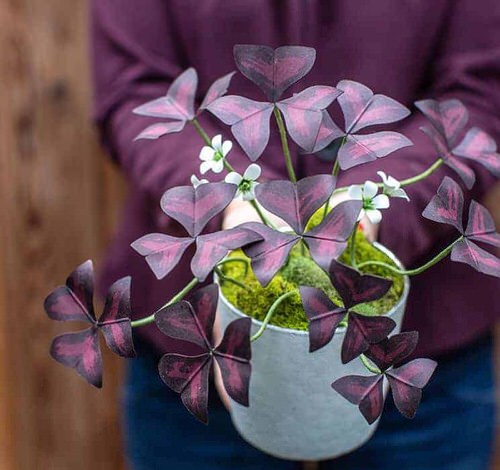
liagriffith
You can encourage blooming by growing the plant in filtered sunlight, providing sufficient moisture, and timely feeding. It flowers from fall to spring and offers small, five-petal blossoms in clusters above the leaves. Deadheading is not essential for promoting flowering, but it gives a neat appearance.
 pyomn
pyomn



